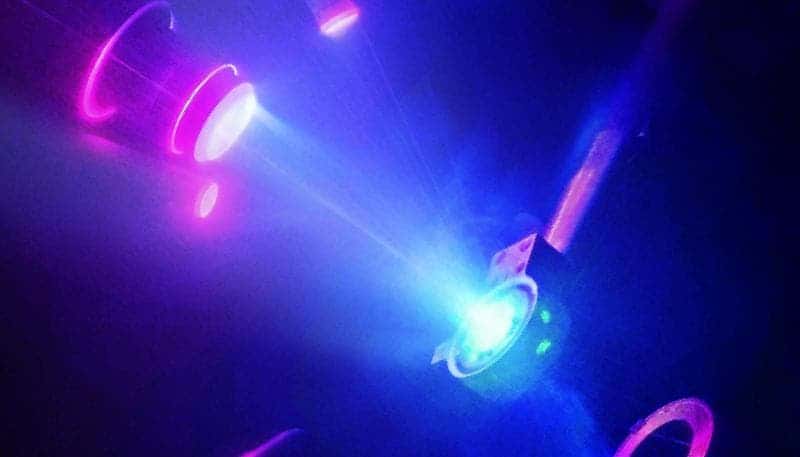Water is anything but boring, despite its prevalence and appearance. And in intensely pressurized and heated alien worlds, water can take on bizarre forms. Scientists recently produced superionic ice in the lab for the first time, which is a hybrid state of matter thought to occur naturally on planets like Uranus and Neptune.

Scientists first hypothesized that this state of water exists in off-world ice giants as early as three decades ago. After four years of research, a team comprised of scientists at the Lawrence Livermore National Laboratory, the University of Rochester, and the University of California, Berkeley, now has experimental evidence that backs this prediction.
In normal ambient pressure conditions, water that reaches its freezing point then crystallizes into hexagonal ice, also known as Ice-1-h. This is what you would call ‘normal’ ice because it’s the only kind you usually find on Earth — from Antarctica’s ice shelf to your kitchen freezer. In other extraterrestrial environments, scientists believe water can crystallize into more than 17 types of ice, some of which have been demonstrated in laboratory conditions.
In 2017, scientists at the Los Alamos National Laboratory observed water turning into Ice-VII (Ice Seven) for the first time. It was a huge breakthrough in science and involved using an array of lasers to squeeze water to a pressure exceeding 50,000 times that of Earth’s atmosphere at sea level.
Now, researchers yet again made Ice-VII, which is about 60% denser than Ice-1-h, but this time took things a step further. First, the team squeezed water using diamonds to apply a pressure 25,000 times greater than the pressure found at sea level. The cubic lattice of ice was then subjected to laser pulses of ultraviolet light, each only one nanosecond long. The Omega-6 laser housed at the University of Rochester’s Laboratory for Laser Energetics ended up simultaneously heating and compressing the Ice-VII.
The pressure was mind-bogglingly millions of times greater than the pressure of air in our atmosphere. What happened was the ice, now in a new configuration, became very conductive. The scientists claim that the matter turned into super–ionized water, comprised of liquid-like hydrogen ions moving within a solid lattice of oxygen.
The whole experiment lasted only 10 to 20 nanoseconds, after which the pressure-release waves decompress and vaporize the whole sample.
After four years of experimenting and making measurements with cutting-edge analytical techniques, such as interferometric ultrafast velocimetry and pyrometry, the researchers are confident that they have found a novel kind of high-pressure ice that conducts electricity really well, they reported in the journal Nature Physics.
“Our work provides experimental evidence for superionic ice and shows that these predictions were not due to artifacts in the simulations, but actually captured the extraordinary behavior or water at those conditions,” said Marius Millot, lead author and a physicist at Lawrence Livermore.
For years, physicists have suspected that Uranus and Neptune have a thin layer of fluid and a large mantle-like layer of superionic ice. But besides water, the core of these planets are also formed of methane and ammonia. It would be thus interesting to follow whether the superionic ice can still form in the presence of other molecules.
“It is gratifying that our experiments can test – and in fact, support – the thin-dynamo idea that had been proposed for explaining the truly strange magnetic fields of Uranus and Neptune,” said Raymond Jeanloz, co-author of the paper, from UC-Berkeley. “It’s also mind-boggling that frozen water ice is present at thousands of degrees inside these planets, but that’s what the experiments show.”


